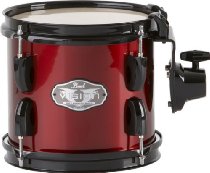Drum Sizes
Contents

When reading sizes such as 10 x 12 or 12 x 13, the first number refers to the diameter (playable surface) of the drum. The second figure is the depth of the shell. So a 12 x 13 tom drum is twelve inches in diameter and thirteen inches deep.
It is important to note the depth of drums. A 12 x 10 tom is not going to have as deep of a sound as a 12 x 13.


Standard Shell Sizes
Sizes used to be standard on kits with each manufacturer offering similar configurations in Rock, Fusion and Jazz set ups. Now, there is really no standard as you can often swap sizes or create your own custom kit at a much more reasonable price than was offered before.Generally speaking though, these are the standard sizes used when referring to different kits:
Rock: 22 inch bass w/ 12, 13, and 16 toms
Fusion: 20 inch bass w/ 10, 12, and 14 toms
Jazz: 20 inch bass w/ 12 and 14 toms
You may sometimes come across what is referred to as “Power” sizes. This usually means the depth of the drum shell is much deeper than the standard configuration.
There is a market for drum sets that come with shallow drums sometimes as small as four inches in depth. These are great for easy transportation or setting up in confined areas.
The shells usually stack inside each other for minimal space when hauling your kit to practice. The resulting sound is often a higher pitch than normal and low to no resonance. These include drums like the Arbiter Flats and the Pearl Rhythm Traveler.
There are more things that influence the sound of your drum than just the drum sizes. These include:
Drum Sticks
Drum Heads
Snare Wires
Leave Drum Sizes and Learn More About Drum Shells.




New! Comments
Leave your comments below.